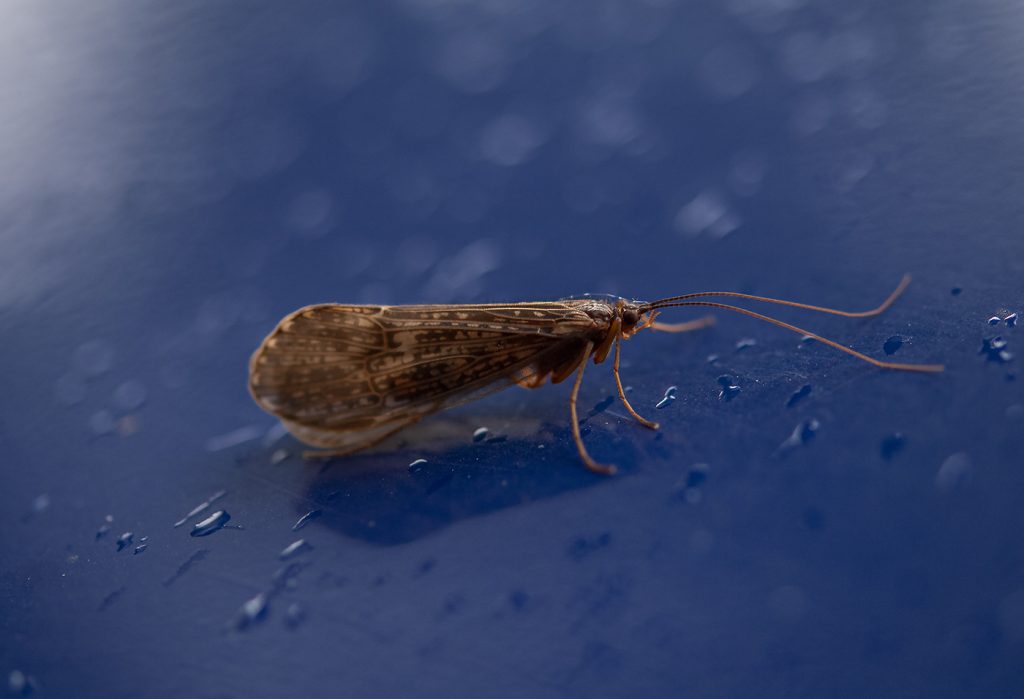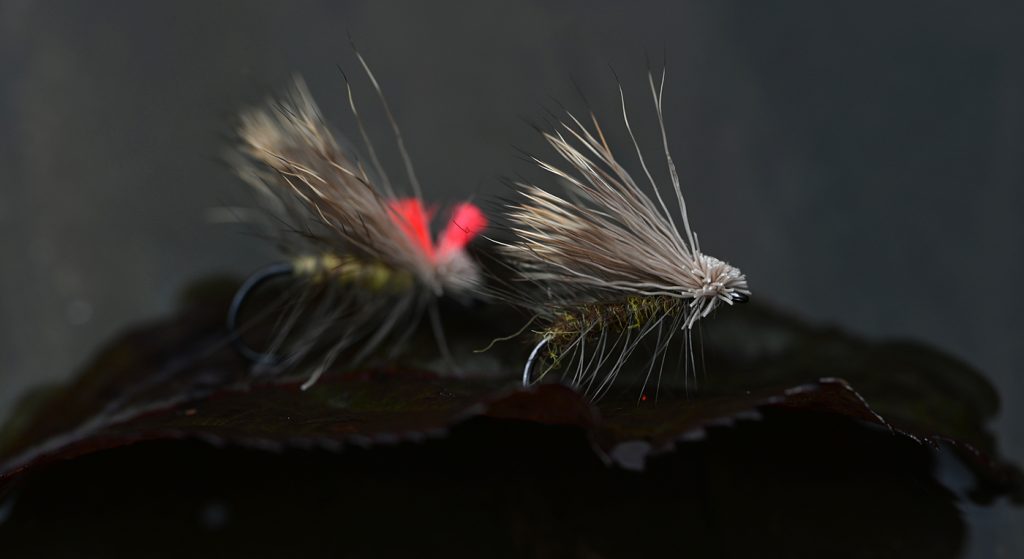
The dry fly season coming to an end. But it’s certainly not over and the fishing can still be quite good. There are still insects on the surface – some that come from below and even some that come from above. An important food item for trout and grayling during the fall is sedges – or caddis.

Just as may flies they spend most of their life under water. First as a nymph (or larvae), living either in a case, swimming freely or as a net building larvae. In these stages they are also very important food for trout and grayling, but that’s for another blog. For this week, I’ll concentrate on the adult insect as they are seen on the surface.
Seen from a fly tiers point of view, sedges are forgiving, because there are some very simple, yet very effective patterns to tie. And of course you can go off the charts with extremely accurate imitations, but they are more for show than increased effectivity. For the fly fisher they are also more forgiving than the classic dry fly, because the insect often flutters over/on the surface, which means that a perfect, drag free presentation isn’t always necessary. In fact making the imitation move a little can sometimes be just what it takes to attract the interest of the fish. The insect is abundant in both running and still water and there are many, many more species than there are may flies. You don’t need to become an entomologist – just look at the naturals and match their size, profile and colour by adapting any on of the patterns below.

The most important aspects are profile and float ability. The latter is important to keep the fly floating, even if fishing it actively, which will otherwise often sink flies. I don’t think I’m wrong in saying that the most fished, most popular and maybe even the easiest-to-tie imitation is Al Troth’s Elk Hair Caddis. An excellent fly that offers a credible profile, fishes well in all sizes, can be varied in colour and size very easily. And – importantly – the hollow elk hair provides the necessary float ability.
I’ve previously written about an almost equally classic imitation, the Europea 12. This is more popular in Europe than in the US, I think, but if you’ve never fished it – please try it. More here:
Another near-classic, very popular caddis imitation is Kenneth Boströms ‘Rackelhanen, which I wrote about in July last year.
If the fish are picky, typically when foraging in slow, glassy glides, I use an imitation with a more accurate profile. Pro Sportfisher’s Caddis Wings offer a perfect “get-out-of-jail-card” for tying an imitation with a more accurate profile. They offer a perfect profile, can be coloured to match any hatch and the wings are printed on a high floating material, so it’s not a problem to fish them in faster water either.

The hatches often occur during the evening and dull weather is no enemy. If the insect hatching is a small one, it’s easy to incorporate a sighter on both the Elk Hair Caddis and the Pro Caddis. Just a touch of foam or poly yarn aids greatly in keeping an eye on the fly.
